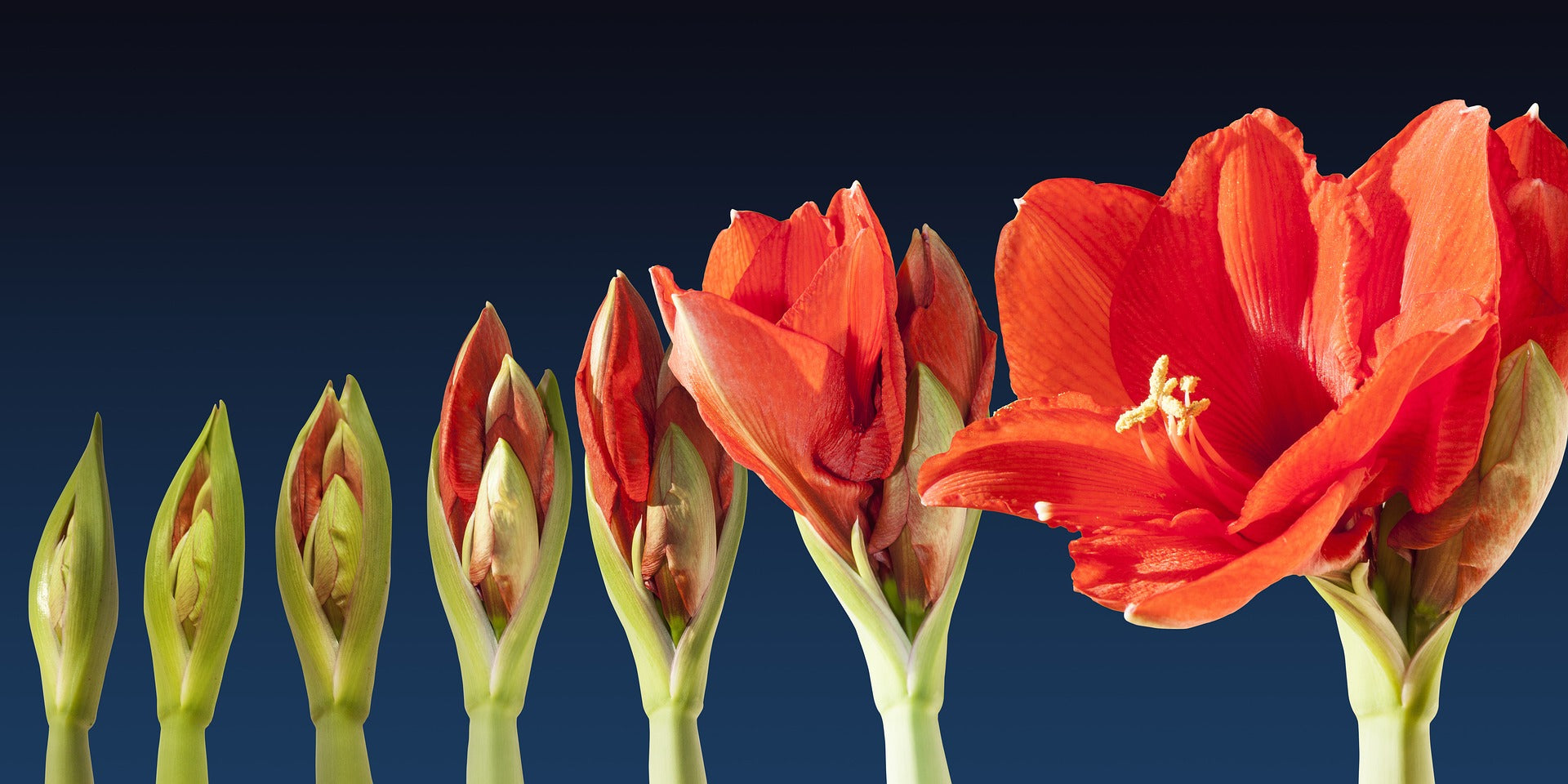Floral enthusiasts love to have Amaryllis blooming over the holiday season. The bulbs produce two stalks of large vibrant colored red, pink, white, and blended flowers 8-10 weeks after planting. There are over fifty varieties on the market with Apple Blossom being last year’s favorite.
When planting, put the bulbs in a 6 to 8-inch pot with quality potting soil. Make sure the pot can drain. Place with the pointed end up and cover all but one-third of the bulb with soil. In 6-8 weeks, stems will emerge and it is advisable to stake them as the flowers are large and heavy. It is also advisable to turn the pot weekly to encourage the stems to grow straight. You can fertilize when you feed your other house plants.

Place Amaryllis in a window with bright indirect light and water when the soil starts to dry. Water them well until flowers fade, then remove the flowers by snipping them off the stem. Allow the stem to remain attached for 48 hours then cut to within an inch of the bulb.
If you are going to keep the bulb for the following year, it can stay in the pot or be planted outside in the garden in a sunny location with adequate moisture. The bulb will develop large strap leaves that will assist in feeding the bulb so that it will re-flower. In mid-august remove the plant from the garden and place in a dark area on its side. If Amaryllis is potted, allow the soil to dry so that the leaves wilt. Once the leaves wilt, cut to within an inch of the bulb. Leave your bulb so it gets a minimum of 8 weeks of rest.
Repot in fresh potting mix, place in bright indirect light, and it will re-flower in 8-10 weeks.











